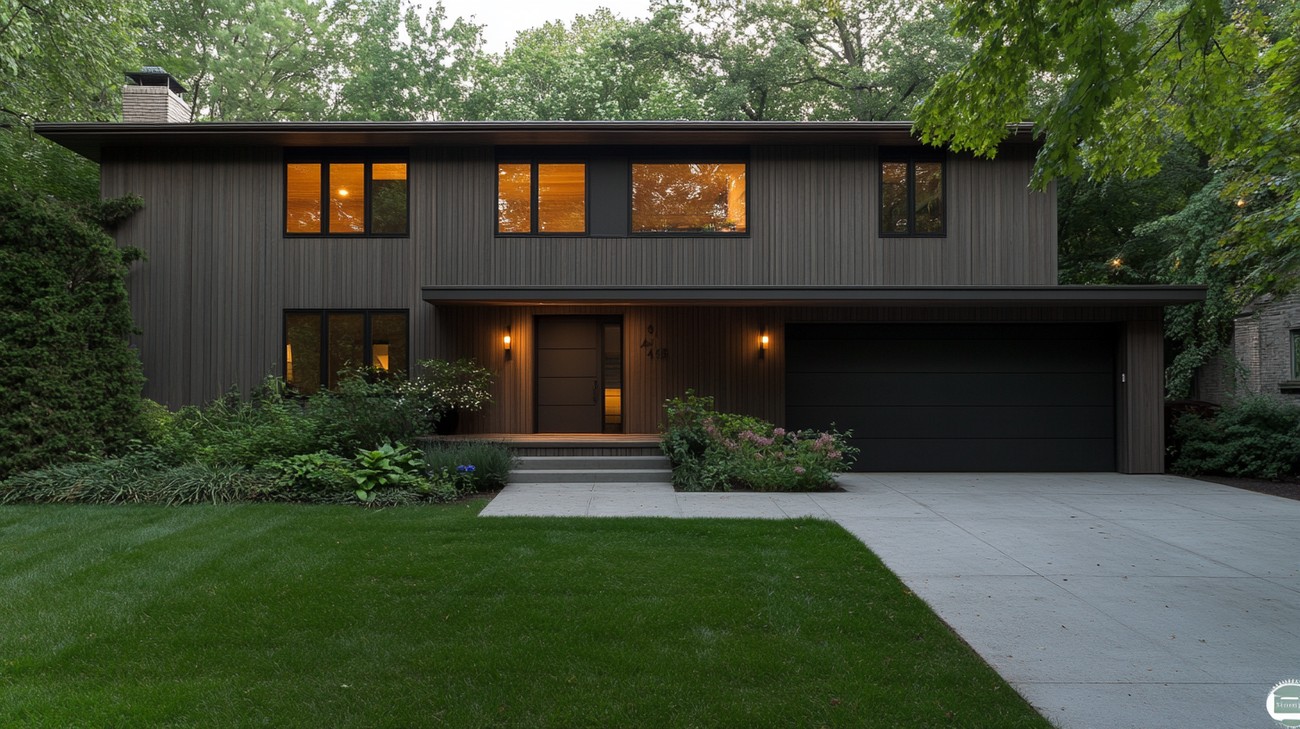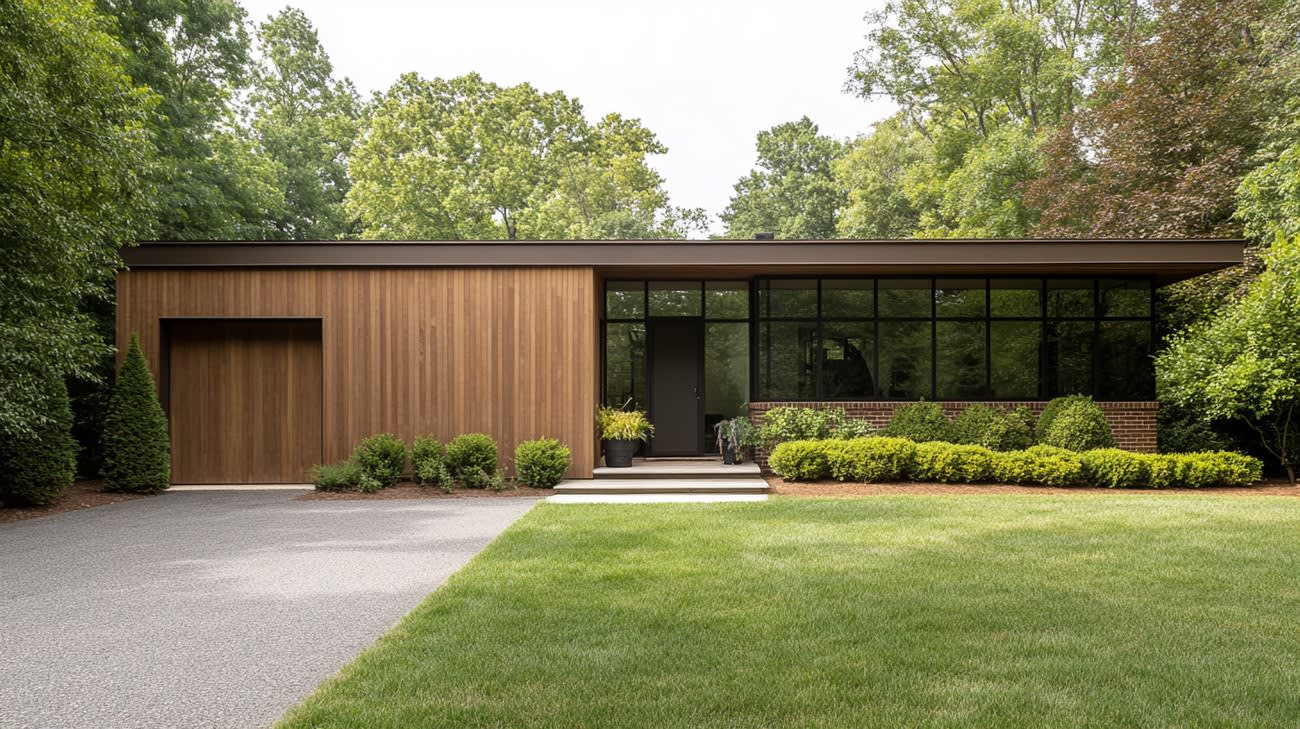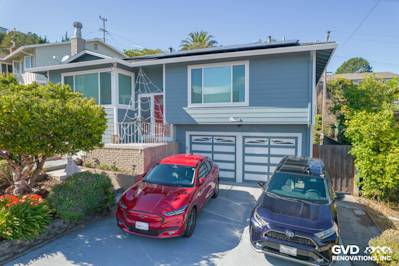When it comes to protecting your home's exterior and ensuring it stands the test of time, opting for a durable, versatile and aesthetically pleasing siding material is crucial. One such material is reverse board and batten siding. This timeless siding style, also known as batten and board, offers a unique way to elevate the exterior design of your home, while providing exceptional protection against weather elements.
What is Reverse Board and Batten Siding?
Reverse board and batten siding combines wider 'boards' with narrower 'battens', arranged in the opposite order compared to regular board and batten siding. Instead of having the boards on the outside and the battens on the inside, the reverse style design has the battens on the outside and the boards on the inside. This results in a distinct vertical pattern that is sure to give your home a unique character.
Materials Used in Reverse Board and Batten Siding
The variety of materials used for reverse board and batten siding offer different looks and levels of durability.
Wood: This is the most traditional material used for siding and offers a classic look. Different types of wood like cedar, pine, or fir can be used, each providing its own distinct color and texture.
Vinyl: A modern option, vinyl siding is affordable, durable, and requires less maintenance compared to wood. It is also available in a wider range of color and texture options.
Metal: Metal siding, typically made of steel or aluminum, is highly durable and largely resistant to weather damage. However, it may lack the natural aesthetic appeal of wood.
The Aesthetic Appeal of Reverse Board and Batten Siding
The reverse board and batten siding offers a unique vertical pattern that stands out from common horizontal siding styles. The alternating wide and narrow strips create an intriguing visual rhythm, imbuing your home with an aesthetic that is both rustic and contemporary. This siding style can also accentuate the height of your home, making it appear taller and more striking. The wide range of material and color options also allows for great customization, allowing you to find the perfect fit for your home's overall design.
Installation of Reverse Board and Batten Siding
Proper installation of reverse board and batten siding is vital for both its visual appeal and functionality. Here are the basic steps:
Preparation: The wall surface should be cleaned and any existing siding or nails removed. A weather-resistant barrier should be applied to protect the home's structure.
Installation of Boards: The boards should be installed vertically, ensuring they are level and properly spaced. They should be securely fastened to the building's framework.
Installation of Battens: The battens should be installed over the seams of the boards. These cover the gaps between boards and provide added weather protection.
Final Touch-Up: Any exposed fasteners should be painted over to match the siding and to protect against corrosion.

Frequently Asked Questions about Reverse Board And Batten Siding
How is Reverse Board and Batten Siding installed?
In contrast to the traditional board and batten setup, where the board is installed first and the batten is installed next, reverse board and batten siding installation involves attaching the battens first and then the boards. This gives the siding its unique and appealing appearance.
Can Reverse Board and Batten Siding be painted or stained?
Yes, you can paint or stain your reverse board and batten siding to match the exterior aesthetic of your home. However, the process will vary depending on the material of the siding. For wood siding, it's typically advised that it be painted or stained to protect it from the elements. Vinyl or steel siding, on the other hand, is usually manufactured in a variety of color choices and doesn't require painting.
What is the typical cost of Reverse Board and Batten Siding?
The cost of reverse board and batten siding can vary considerably depending on the material you choose, the size of your home, and the complexity of the installation. Wood, for instance, is a premium option and will cost considerably more than vinyl. It's recommended that you get quotes from multiple contractors or retailers to get a fair price.
How does Reverse Board and Batten Siding perform in different climates?
The performance of reverse board and batten siding will largely depend on the type of material you select. Vinyl siding performs well in a variety of climates, though it may crack in extremely cold temperatures. Wood siding needs more maintenance in humid or rainy climates to prevent rot. Fiber cement siding, though more expensive, holds up very well across a wide range of climates.
How does Reverse Board and Batten Siding compare to traditional Board and Batten Siding?
Reverse board and batten siding offers a different aesthetic from traditional board and batten siding, with the battens placed before the boards, rather than the reverse. This variation provides a distinctive look that can be more appealing to some homeowners. Beyond aesthetic differences, the materials used and installation process remain quite similar to traditional board and batten siding.
What maintenance is required for Reverse Board and Batten Siding?
For wood siding, regular painting or sealing is required to prevent moisture damage and rot. Vinyl siding is relatively low-maintenance, requiring only washing to remove dirt and debris. Steel siding only requires an occasional rinse with a hose. Any dents or damages in the siding should be repaired as soon as possible to prevent further damage.
Can I install Reverse Board and Batten Siding myself?
If you have sufficient DIY experience and the right tools, it is possible to install reverse board and batten siding on your own. However, the process can be time-consuming and errors can lead to problems down the line. Many homeowners opt to hire a professional to ensure the siding is installed correctly and professionally.

Pros of Reverse Board and Batten Siding
Unique Aesthetics
Reverse board and batten siding creates a distinctive look that is different from conventional siding options. While traditional board and batten siding features wide boards separated by narrow strips (or battens), reverse board and batten has narrow boards separated by wider battens. This flip in the design creates unique aesthetics and visual interest appealing to homeowners looking for a more distinct and edgy exterior.
Increased Dimension and Depth
The wide battens used in reverse batten siding give an increased dimension and depth to the building exterior. This results in deep shadow lines and rich texture, enhancing the overall exterior aesthetic appeal.
Highly Versatile
Thanks to its unique design, reverse board and batten siding is highly versatile. It can be used horizontally, vertically, or even diagonally to meet different design needs, allowing for a high level of customization. It can be painted any color or stained to suit the homeowner's aesthetic preferences.
Durable and Long-lasting
Reverse board and batten siding is highly durable and resistant to extreme weather conditions. When well-maintained, the siding can last for many years without showing signs of wear and tear.
Resistance To Elements
The arrangement of the boards and battens in the reverse board and batten siding can help protect the siding against elements. The overlapping design allows for natural moisture and debris to fall off the wall, reducing the likelihood of moisture buildup and subsequent mold and rot issues.
Cost-Effective
While the initial cost may be higher than standard siding options, the long-term cost benefits of reverse board and batten siding are noteworthy. Its durability and ease of maintenance mean less frequent replacement and repair costs, which can amount to significant savings in the long run.
Cons of Reverse Board and Batten Siding
Higher Initial Costs
Compared to traditional siding options, reverse board and batten siding can be more expensive initially. This is because of the unique design and the extra amount of material used to create the wide battens.
Installation Complexity
The installation of reverse board and batten siding can be more challenging and time-consuming than traditional siding. This is mainly due to the need for precision in aligning the narrow boards with the wide battens. The installation process may require professional assistance which may add to the overall costs.
Maintenance
While reverse board and batten siding is durable, it is not completely maintenance-free. It requires regular painting or staining to keep its attractive appearance. Failing to maintain it adequately can lead to issues such as termites, rot, and mold growth.
Limited Availability
Since reverse board and batten siding is not as widely used as traditional siding options, the variety of textures, styles, and colors may be limited. In addition, it may be more difficult to find suppliers, professionals with installation experience, and suitable replacement pieces should any damage ever occur.
Potential for Water Intrusion
Though the design of reverse board and batten siding has some protective effects against the elements, there could still be potential for water intrusion in instances of heavy storm where rain beats against the siding from an angle. Poor or incorrect installation could also increase this risk leading to moisture problems, mold, and rot.
Less Traditional Appearance
For homeowners interested in maintaining a traditional appearance for their homes, reverse board and batten siding may not be the best option. Its unconventional aesthetics, while appealing to some, may not be as attractive to those who prefer more traditional or conventional home styles.

Myths and Misconceptions About Reverse Board and Batten Siding
One of the primary reasons that homeowners can be reluctant or hesitant to choose reverse board and batten siding for their home’s design is due to the various misconceptions and myths that surround it. It is crucial to distinguish between the myths and the facts to make an informed decision regarding the best siding options for your home.
Myth 1: Reverse Board and Batten Siding Only Works for Rustic Designs
Misconception
Many people believe that reverse board and batten siding only works well for cabins, barns or rustic home design.
Correction
The reality is that this siding type is versatile and can enhance a variety of architectural styles. Whether you're going for a modern, classic, or country style, the reverse board design can add an unique aesthetic appeal to your home.
Myth 2: Reverse Board and Batten Siding is Not Durable
Misconception
One common misconception is that reverse board and batten siding is not durable and cannot withstand harsh weather conditions. This is due to the belief that the reverse design allows water to get trapped, leading to rot and damage.
Correction
Contrary to this belief, reverse board and batten siding can be incredibly durable when properly installed and maintained. The design is intended to shed water, not trap it, reducing the risk of water damage. The siding can be made from a variety of materials, including wood, vinyl, and engineered wood, each offering different levels of durability and resistance to weather conditions.
Myth 3: Reverse Board and Batten Siding is Difficult and Expensive to Install
Misconception
The belief that reverse board and batten siding installation is difficult and expensive is another common misconception. The thought of using an alternative design and layout might seem to require a high degree of expertise that could incur extra cost.
Correction
In reality, the installation process is similar to other types of siding. A competent contractor or a savvy DIY homeowner can install it. The cost of the project largely depends on the material chosen and the size of your home, not the complexity of installation.
Myth 4: Reverse Board and Batten Siding Requires High Maintenance
Misconception
Many people believe that reverse board and batten siding demands high maintenance, including regular staining or painting to maintain its appearance and protect it from weather elements.
Correction
Actually, reverse board and batten siding is quite low-maintenance, particularly if made from modern materials like vinyl or engineered wood. Even when made from traditional wood, a good initial paint or stain job paired with occasional inspections and necessary touch-ups can keep your siding looking sharp and performing well for a long time.
Myth 5: Reverse Board and Batten Siding is Less Energy Efficient
Misconception
Some homeowners believe that because of the design and the gap between the boards, reverse board and batten siding is not as energy efficient as some other siding options.
Correction
The reality is, when properly insulated during installation, reverse board and batten siding can provide excellent energy efficiency, helping to stabilize your home's interior temperature and potentially reducing heating and cooling costs.
In conclusion, separating the myths from the facts can help homeowners understand that reverse board and batten siding could be a great option for their home. It is a versatile, durable, and stylish siding choice that can be a beneficial element for many building designs.
Summary
So, now that we've covered plenty about reverse board and batten siding, you should have a pretty good idea about why it's a great option for anyone looking to update the exterior of their home. With its unique design that flips the traditional board and batten look, it's a surefire way to make your home stand out. Its weather-resistant properties and enduring appeal make it worthy of consideration for any homeowner.
Here's the thing about reverse board and batten siding - it's not just easy on the eyes, it's also sturdy and long-lasting. If you're after a low-maintenance and robust siding option that still ticks the style box, then this might just be it. Just think of all the years of curb appeal you'll enjoy without having to worry about regular surface treatments or weather damage.
In wrapping up, reverse board and batten siding is an all-around winner. Not only does it offer impressive longevity and minimal upkeep, but it also injects a touch of uniqueness to your home's aesthetics. So, whether you're considering a home makeover or planning a new build, remember to factor this versatile and attractive siding option into the mix. You'll definitely be glad you did.
About Bay Area Siding Company
Welcome to the Bay Area Siding Company! Nestled in the heart of Bay Area, CA, we are your one-stop solution for top-tier siding services. With a steadfast commitment to quality and a deep understanding of our clients' needs, we're more than just a company - we're a passionate team of professionals driven by the desire to protect and beautify your homes. And the Bay Area? It's not just our location, but also a part of our identity - a testament to our dedication to serving this beautiful community with the very best. So whether you're renovating, repairing, or just giving your home a new look, remember - Bay Area Siding Company has got your back. Our pride is in our work, and our joy is in your satisfaction.
















